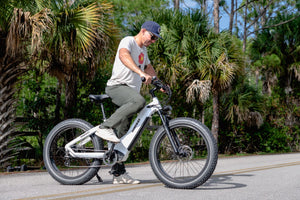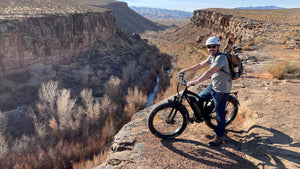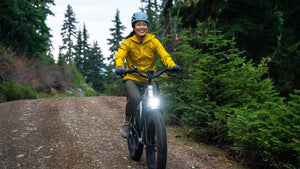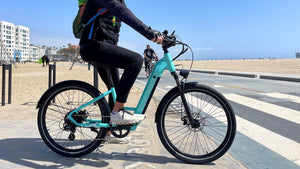
Get The Perfect Ride: How to Select the Right Tires for Your Electric Bike
Buying an electric bike is simple, but selecting the correct one with the right tire might be tricky. Choosing the right tires for your electric bike is a crucial decision. The correct tire will influence your safety and enjoyment of riding over time. When selecting a tire, you must examine the size and features required to meet your riding requirements.
With the several types of electric bike tires on the market and their various sizes, it's important to consider some helpful tips for getting and maintaining the right tire for a perfect ride.

Types Of Electric Bikes Tires
As a cyclist, whether you deem it necessary, you should be aware of and consider the different types of electric bike tires.
-
Road Tires:
Road tires are unique for electric bikes, created especially for usage on paved roads. It has a width that falls between 23 and 25 millimeters. They are conducted with lightweight materials to lessen rotational weight and increase acceleration. The lighter tire design makes the electric bike more agile and easy to maneuver your way. These features make it easier for riders to ride up hills or through traffic. These tires have reinforced sidewalls or puncture-resistant layers to reduce the possibility of flats brought on by sharp objects or road debris. These factors have led to road tires becoming the preferred wheel for many individuals. However, road tires are not advisable in wet situations like rain.
-
Cyclocross Tires:
Cyclocross tires function effectively on various surfaces, including grass, mud, gravel, and pavement. Compared to road tires, they include 30 to 33-millimeters wide tires with an aggressive tread pattern. These tires' breadth combines performance on regular roads and stability on off-road surfaces. It also has reinforced sidewalls and puncture-resistant layers to boost durability and offer protection against tears and abrasions.
-
Commuting Bike Tires:
Bikes with commute tires are intended explicitly for urban and commuter cycling, where cyclists can navigate various terrain. They are broader than cyclocross tires. The width adds stability and cushioning, reducing road vibration and offering a smoother ride. This tire's distinct feature is that it improves grip and control in wet or rainy situations. The tire's shape directs water away from the tire's surface, reducing the risk of hydroplaning. If you live in an area with a lot of rain or moisture, these tires are ideal for your electric bike.
-
Mountain Bike Tires:
Mountain electric bike tires have various distinguishing characteristics that make them ideal for off-road riding. It has an aggressive tread pattern with big knobs. The design may change according to the planned trail conditions, but it still delivers traction and control in various locations. Mountain Bike Tires are broader than other types of bike tires. The wider contact patch with the ground gives greater stability control on rocky and technical trails.
-
BMX Tires:
These tires utilize in numerous freestyle and stunt riding disciplines. BMX tire designs endure the demands of intense riding while also providing durability for tricks and jumps. These tires can run at high tire pressures, contributing to better control and efficient power transmission during jumps and tricks. The tire width is similar to mountain bikes because they are broader and thicker.

Electric Bicycle Tire Sizes
Bicycle tires come in various sizes, significantly impacting how well an e-bike performs because the tires affect several features of the bikes. Such as the ease of movement, the amount of rolling, and the smoothness of the ride. Some of the tire sizes include:
-
16-inch e-bike tire:
The 16-inch electric bike tire is typically seen on folding bikes and is small and portable, making it ideal for city commuting. It has an urban-oriented tread pattern for excellent traction and little rolling resistance on pavement. These tires frequently incorporate puncture-resistant characteristics to avoid flats, although because of the size of the tire, it is still easy for a puncture to occur. These types of tires withstand daily use and for commuting. Both tube-type and tubeless configurations are available as tube options. 16-inch e-bike tires balance performance, mobility, and size, making them perfect for urban settings.
-
20-inch e-bike tire:
Many types of bikes, including folding bikes, BMX bikes, and even children's bikes, frequently use 20-inch tires. Depending on the intended use and design of the cycle, different types of bikes with 20-inch tires are not harmful. It's important to consider the bike's exact model and intended use. Although these tires are still more susceptible to damage from pebbles and other obstacles than bigger regular wheel diameters, riders may still encounter certain drawbacks to utilizing them. The Himiway Big Dog Electric Cargo Bike features a 20-inch tire rim size for easy movement.
-
26-inch e-bike tire:
For a good blend of stability and versatility for various e-bike riding styles, the 26 inches tire size is often considered the standard. Whether riding on smooth pavement or off-road tracks, a 26-inch tire's tread pattern gives traction and control. Several Himiway bikes, including the popular Himiway Cruiser Long Range Fat Tire Electric bike and the Cruiser Step-Thru models, feature a 26-inch tire. The e-bike versions with fat tires offer better off-road traction, stability, and a more pleasant ride, making them appropriate for commuting in cities and off-road excursions. The Himiway Cruiser and Cruiser Step-Thru provide riders with adaptability and improved performance on various terrain due to their sturdy structure and electric assistance.
Factors To Consider When Choosing The Right Size Of Electric Bike Tires
It's crucial to consider several factors when selecting the correct tire size for an electric bicycle. Consider your riding style and the terrain you'll be riding on first. Larger tires (26-29 inches) are preferable for off-road or mountain biking, whereas smaller tires (16-20 inches) are suitable for urban commuting. Ensure the tire size is appropriate for your bike's frame, and consider how it will impact stability and handling.
For optimum comfort, consider the size of your body or the cargo you intend to carry. Make sure the tire size you choose can support the load by checking the weight capacity of your bike. Take into account tire width and tread design for traction and performance. To make the best decision, consider the manufacturer's suggestions, the product's availability, and your tastes. Considering these things, you will choose the correct tire size to improve your riding experience.
Fat Tires vs. Thin Tires: Which one to choose?
We often categorize electric tires into two types: fat and thin tires. It is preferable to get fat tires if you want to ride frequently on unpaved or rugged terrain. On the other hand, thin tires are ideal for smooth roads rather than bumpy ones. Both types have various benefits when it comes to their durability, grip, and speed.
Benefits Of Fat Tires
- Increased Stability:
Fat tires have a larger contact patch with the ground, which improves balance and stability. And because of this, fat tire e-bikes are suitable for off-road or rugged terrain.
- Better Traction:
The larger surface area of fat tires makes them more traction-friendly, particularly in tricky or loose situations like mud, snow, or sand. Riding on rigid surfaces might give you more control and confidence.
- Enhanced Comfort:
The ride is smoother and more comfortable thanks to the natural suspension that fat tires provide by absorbing shocks and vibrations from rugged terrain. This makes them a popular option for riders looking for a softer ride.
Benefits Of Thin Tires
- Reduced Rolling Assistance:
Thin tires have less rolling resistance than thicker tires. As a result, maintaining speed requires less effort, which makes them perfect for road cycling or urban commuting, where efficiency is crucial.
-
Increased Speed:
Compared to fat tires, thin tires are often lower in weight and provide less wind resistance. Riders who value speed and performance choose them since they can lead to a higher speed.
-
Agile Handling:
Thin tires' compact profiles offer rapid and responsive handling, making it easier to maneuver, especially when negotiating tight turns or crowded metropolitan areas.
What to Consider Regarding Durability, Grip, and Speed
-
Durability:
Fat tires are more likely to withstand rugged terrain due to their thicker structure, which makes them more puncture-resistant. Although lighter and faster than wide tires, thin tires may be more prone to punctures and less suitable for challenging off-road conditions.
-
Grip:
Fat tires offer a firmer grip on sloping terrains like gravel, sand, or snow. Also, they provide good traction on paved roads. Thin tires' narrower contact area may provide less grip in such circumstances.
-
Speed:
Thin tires are more efficient and can travel faster on smooth surfaces due to their lower rolling resistance and lighter weight. It could be harder to use fat tires to keep moving at the same pace because of their more excellent rolling resistance.
Tips For Maintaining Your Electric Bike Tires
Tire care is necessary for electric bike tires to operate safely and optimally.
-
Check the tire pressure regularly:
Always check your tire pressure regularly. Make sure you maintain the manufacturer's recommended tire pressure. Using a reliable pressure gauge, check the tire pressure frequently, ideally before each ride. Adjust the pressure to provide a comfortable and smooth ride while avoiding excessive wear or damage.
-
Change the tires when Needed:
Keep an eye on the condition of your tires and change them as needed. Look for wear indicators in the tread, such as bald areas or cracks. It's time to replace the tire if its tread depth has drastically decreased or it exhibits damage. Having worn-out tires can affect traction and safety when driving.
-
Proper Cleaning and Maintenance:
To preserve the performance and longevity of your tires, keep them clean. Wash them down frequently with a moist cloth to keep them free of dust, debris, and filth. Steer clear of applying aggressive chemicals that could damage the rubber. Also, check the tires for any embedded objects, such as glass or thorns, and remove them immediately to avoid punctures.
FAQ:
-
How do I change the back tire on an electric bike?
To change the back tire on an electric bike, refer to the manufacturer's instructions or user manual, use appropriate tools and follow the recommended steps, and seek professional assistance if unsure or uncomfortable.
-
What is the recommended tire pressure for a Himiway e-bike?
The recommended tire pressure for a Himiway e-bike can be found in the manufacturer's guidelines or user manual, typically ranging between 20-30 PSI, and it's essential to check and adjust tire pressure for optimal performance regularly.
Conclusion
Your riding style, terrain, and personal preferences will all influence which tire size is best for your electric bike. Fat tires provide stability and traction for off-road excursions, while thin tires for city travel offer speed and agility. Regular maintenance and following manufacturer recommendations ensure the best performance and safety. For an excellent electric bike experience, take into account your needs.
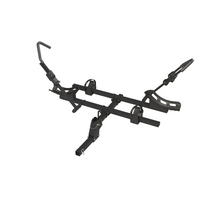
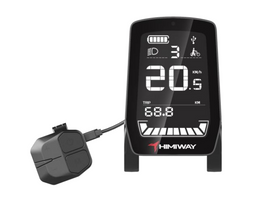
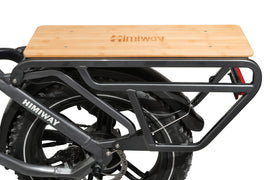
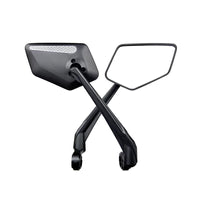
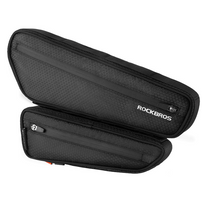
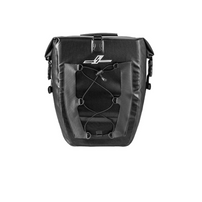
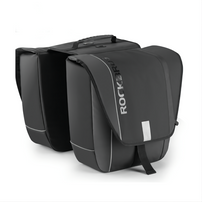
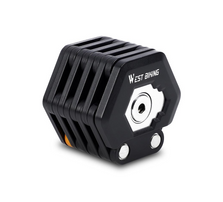
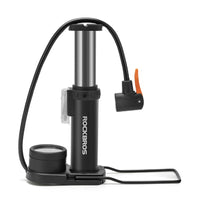
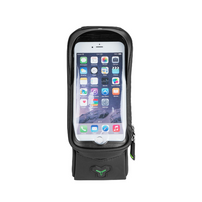


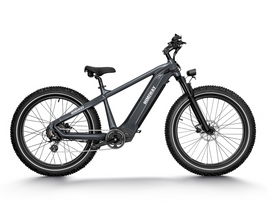
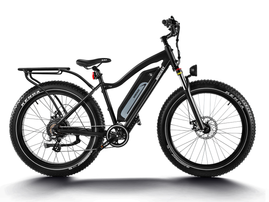
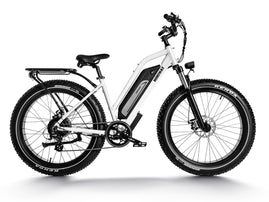
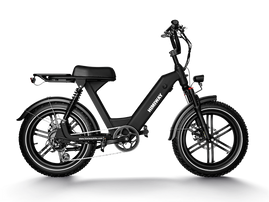
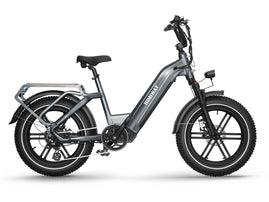
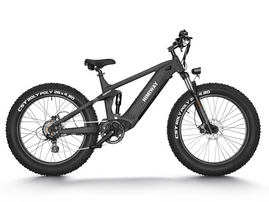
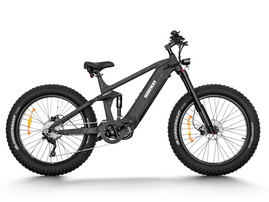
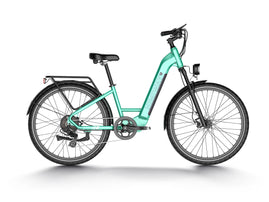
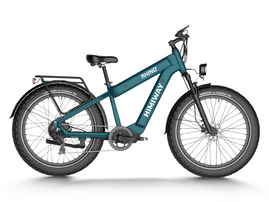




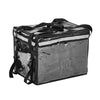
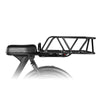


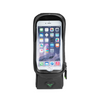
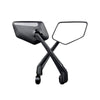

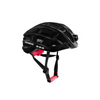

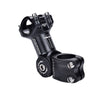
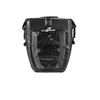



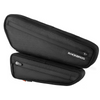
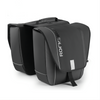
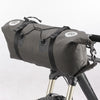

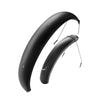




 US
US
 Canada
Canada Deutschland
Deutschland La France
La France Nederland
Nederland United Kingdom
United Kingdom